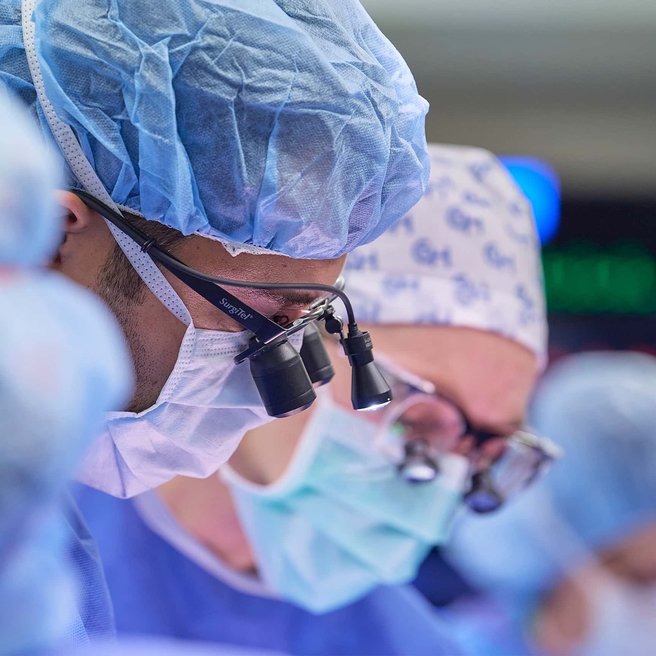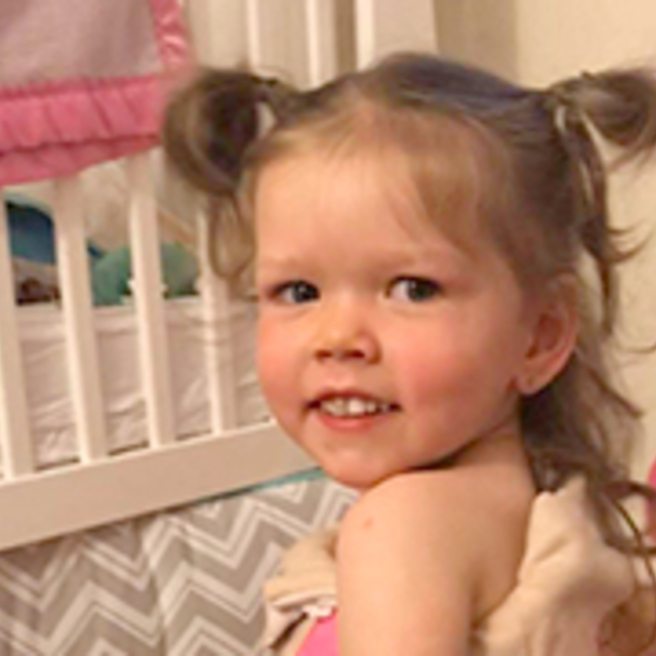What is infantile scoliosis?
In infantile scoliosis, the spinal curvature that occurs with scoliosis appears before the age of 3 years. Scoliosis is defined by an abnormal sideways curve of the spine. Instead of a straight line down the middle of the back, a spine with scoliosis curves and sometimes looks more like the letter “S” or “C,” rather than a straight “I.” The spine also can be rotated or twisted, pulling ribs along to form a multidimensional curve. Scoliosis is a deformity of the spine and should not be confused with poor posture.
Infantile scoliosis is a form of early-onset scoliosis. Another type is juvenile scoliosis, which appears between the ages of 3 and 8.
Early-onset scoliosis is a form of idiopathic scoliosis, which is quite different from congenital scoliosis, another type of scoliosis found in infants. In the congenital form of scoliosis, there are missing or abnormally shaped vertebra which throw off the balance of the spine, causing it to curve. This type of scoliosis may be associated with malformations in other organs such as the heart and kidneys. A diagnosis of congenital scoliosis normally requires further testing of these systems as well as more complex imaging studies. The treatment course is also different than idiopathic scoliosis.
Scoliosis in babies and toddlers is rare. Scoliosis more commonly occurs in adolescence between the ages of 10 and 18.
Causes of infantile scoliosis
Infantile scoliosis is a form of idiopathic scoliosis, which means that its cause is unknown.
Research — including work done at Children's Hospital of Philadelphia (CHOP) — has suggested a possible genetic component. But continued research is needed to identify the specific genes and genetic markers involved.
Signs and symptoms of infantile scoliosis
Scoliosis ranges from mild to severe, as measured by the degree of spine curvature.
Mild infantile scoliosis may hardly be noticeable, and the primary concern may be with the cosmetic appearance of the back or with how the degree of curvature might increase over time.
Moderate curvature may cause changes in posture, which might be noticed as:
- Tilted, uneven shoulders, with one shoulder blade protruding more than the other
- Prominence of the ribs on one side
- Uneven waistline
- Difference in hip height or position
- A leg that looks longer than the other
- Overall appearance of leaning to the side
- Head not centered over the shoulders
- When standing straight, a difference in the way the arms hang beside the body
- When bending forward, a difference in height between the sides of the back
Babies with infantile scoliosis do not usually experience any pain from the condition.
Testing and diagnosis for infantile scoliosis
Early detection of infantile scoliosis is important for successful treatment of spinal curves. Early treatment to correct spinal curvature or stop progressive worsening can greatly improve your child’s long-term health outlook. A physician will perform a complete medical history, a physical examination and a visual evaluation of the curvature of your child's spine.
Imaging tests take a closer look at your child's spine to see if there are any problems with the bones and to measure the degree of curvature.
- X-rays are one of the primary diagnostic tools for infantile scoliosis and show the precise angles of curvature in two-dimensional pictures.
If the curve pattern is not typical or if there is something unusual in the X-ray, a physician may order one of the following tests to provide more information:
- EOS imaging, an imaging technology that uses an ultra-low dose of radiation to create three-dimensional models from two planar images. EOS images are taken while your child is in an upright or standing position.
- Magnetic resonance imaging (MRI), which uses a combination of large magnets, radiofrequencies and a computer to produce detailed images of organs and structures within the body. An MRI does not expose your child to radiation.
- Computed tomography (CT) scan, which uses a combination of X-rays and computer technology to produce cross-sectional images ("slices") of the body. CT scans are helpful in detecting ribcage problems.
- Radioisotope bone scan or DEXA scan, which determines the health and strength of the spinal bone. CHOP's analysis of these scans is unique in that our clinicians compare your child's scan to normative data we have compiled from other children, not standard adult values.
Treatment for infantile scoliosis
Treatment for infantile scoliosis is determined by the severity of the spinal curvature and the likelihood that it will worsen over time.
Many infants with mild scoliosis (a curve of less than 25 degrees) do well without surgery and may only need regular monitoring to make sure that the curve doesn't worsen. Monitoring may include regular observation, X-rays and lab tests. Most mild cases of infantile scoliosis do not worsen and many correct themselves as your child grows.
Other children with progressive curves may need immediate treatment to prevent chest-wall deformity and allow normal lung development.
Bracing and therapeutic exercise
If your child has a moderate spinal curve (between 25 and 40 degrees) or if the spinal curve worsens over time, treatment may include:
- Back bracing, which can hold the curve in a partially corrected position, preventing progression of the deformity. The RSC® Brace System for pediatric scoliosis is now prescribed by CHOP when appropriate. This new type of brace is lighter than traditional scoliosis braces and incorporates expansion and pressure to treat scoliosis curves in three dimensions.
- Serial body casting, in which the spine is manipulated into a straighter position while your child is under anesthesia, and a custom-built cast is formed around the torso. The process is repeated every few months as your child grows, and the treatment usually lasts one to three years. Serial body casting is considered for children who are between 6 months and 6 years old. It is most effective in straightening a curved spine when started early, before the age of 18 months.
Older children and adolescents who use a brace to treat scoliosis, or who have mild curvature and would like to improve their posture, may also benefit from:
- Scoliosis exercises, which can help to correct scoliotic posture and improve strength and balance. CHOP offers exercise therapy and training inspired by the principles of Schroth physiotherapy scoliosis-specific exercises (PSSE) as part of the Scoliosis Rehabilitation Program at our Specialty Care Center in King of Prussia.
Surgical interventions
If your child has a more extreme spinal curve (more than 40 degrees) or if the spinal curve worsens over time even with bracing, surgery may be recommended.
There are several surgical options to correct infantile scoliosis. Doctors will evaluate your child and determine which surgery is appropriate based on your child’s age, spinal curvature, and other medical considerations.
Growing rods
In growing rod surgery, the curve in your child's back is spanned by one or two rods under the skin to avoid damaging the growth tissue of the spine. The rods are attached to your child’s spine and vertebrae above and below the curve. The growing rods help guide spinal growth and drive the spine straight.
Your child will return to the hospital every six months for outpatient surgery to have the growing rods expanded. This approach minimizes the spinal deformity, maximizes spine growth, and allows continued lung development as your child grows.
CHOP surgeons have pioneered the use of magnetically adjustable growing rods. These rods can be adjusted in the doctor’s office without the need for a surgery or general anesthesia. This technology has greatly reduced the number of surgeries patients require.
Vertebral body tethering
This surgical procedure places tethering cords along one side of the spine to restrain growth and enable the spine to straighten as the other side grows. It is a possible alternative to bracing and spinal fusion for certain patients who are still growing and who are at risk of worsening spinal curvature. CHOP surgeons were among the first to perform vertebral tethering surgery.
Vertical expandable titanium ribs (VEPTR)
If your child is still growing and the spinal curve is affecting rib and lung development, your child may also be diagnosed with thoracic insufficiency syndrome.
If this is the case, an innovative surgical device called vertical expandable prosthetic titanium ribs (VEPTR) may be recommended by your child's orthopedic physician. VEPTR stabilizes the curved spine and allows your child’s ribs, spine and lungs to expand and grow. The VEPTR is surgically adjusted as your child ages until he or she reaches full skeletal maturity.
Spinal fusion
If your child’s spinal curvature has been treated with growing rods or VEPTR and your child has now finished growing, spinal fusion surgery may be recommended. This surgery permanently stabilizes your child's spine. Spinal fusion surgery may also be recommended if your child’s spinal curvature has not previously been treated with surgery but has worsened in the final 2 to 3 years of growth in adolescence.
In this procedure, the abnormally curved spinal bones are realigned and fused together. Metal implants are inserted to correct the curvature.
Follow-up care for infantile scoliosis
If your child is treated with bracing, he or she will be re-evaluated every six months to check for changes in spinal curvature until the spine is found to be stable.
If your child receives growing rods or VEPTR surgery, follow-up visits will be required to adjust the spinal rods or titanium ribs as your child grows. When your child has finished growing, spinal fusion may be necessary to permanently maintain the corrected curvature.
For children who received vertebral body tethering, in most cases the screws and cable used will not need to be removed or adjusted.
Outlook for infantile scoliosis
Most children with infantile scoliosis have only mild to moderate curvature and either do not require treatment or can be effectively helped by bracing and therapeutic exercise.
Almost all children with surgically corrected scoliosis do well and lead active, healthy lives. Scoliosis surgery does not affect the ability to choose a career with high physical demands nor does it affect childbearing in adulthood. When clothed, most children show no visible signs or symptoms of scoliosis five years after surgery.
Why Choose CHOP?
The Spine Program at Children's Hospital of Philadelphia (CHOP) is one of the largest multidisciplinary programs in the world dedicated to the diagnosis and treatment of pediatric spine conditions. We have led the development and introduction of new treatments, from innovative bracing and exercise therapy to new surgical approaches.
We provide comprehensive evaluation and treatment to thousands of babies, children and teens with spinal deformities and other conditions affecting the spine. Every spine condition is different, so treatment is determined on a case-by-case basis. In planning your child's individual treatment, our team of specialists will consider the severity of the curve, where it occurs in the spine, and your child's age and stage of growth.
We know that it’s important to explore all non-surgical options when it comes to treatment for your child’s spinal condition. That’s why we focus on non-invasive treatment options first, whenever possible, including bracing and special physical therapy programs. When surgery is necessary, we utilize cutting-edge navigation and imaging equipment in our operating rooms, and follow enhanced safety protocols. And in the most severe cases, where the curvature of the spine causes breathing problems or restricts the development of the lungs, our Wyss/Campbell Center for Thoracic Insufficiency Syndrome is here to help.
At CHOP, we practice collaborative, family-centered care. A team of expert clinicians — including leading orthopedic physicians and surgeons, pediatric nurses, physical and occupational therapists, and other specialists — will partner with you in the care of your child. We also recognize your child's pediatrician as an important part of the clinical team and provide regular updates on your child's progress.
Resources to help
Spine Program Resources
We have created video, audio and web resources to help you find answers to your questions and feel confident with the care you are providing your child.

